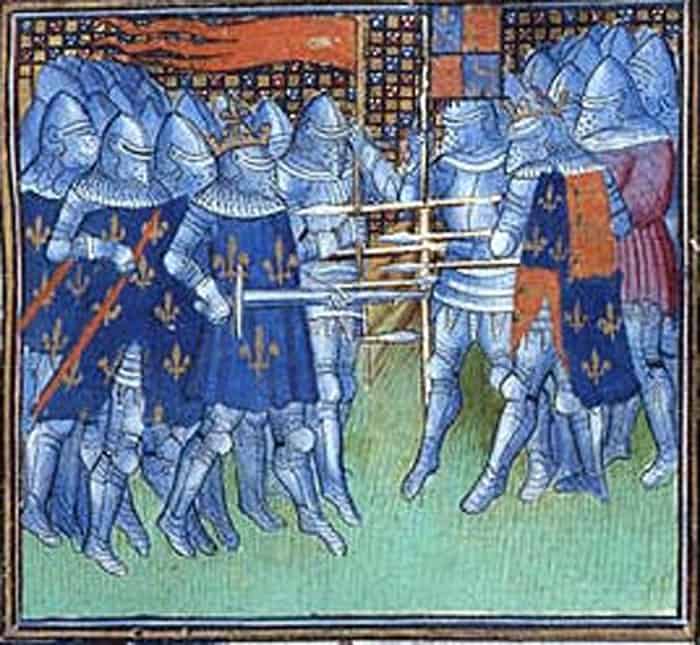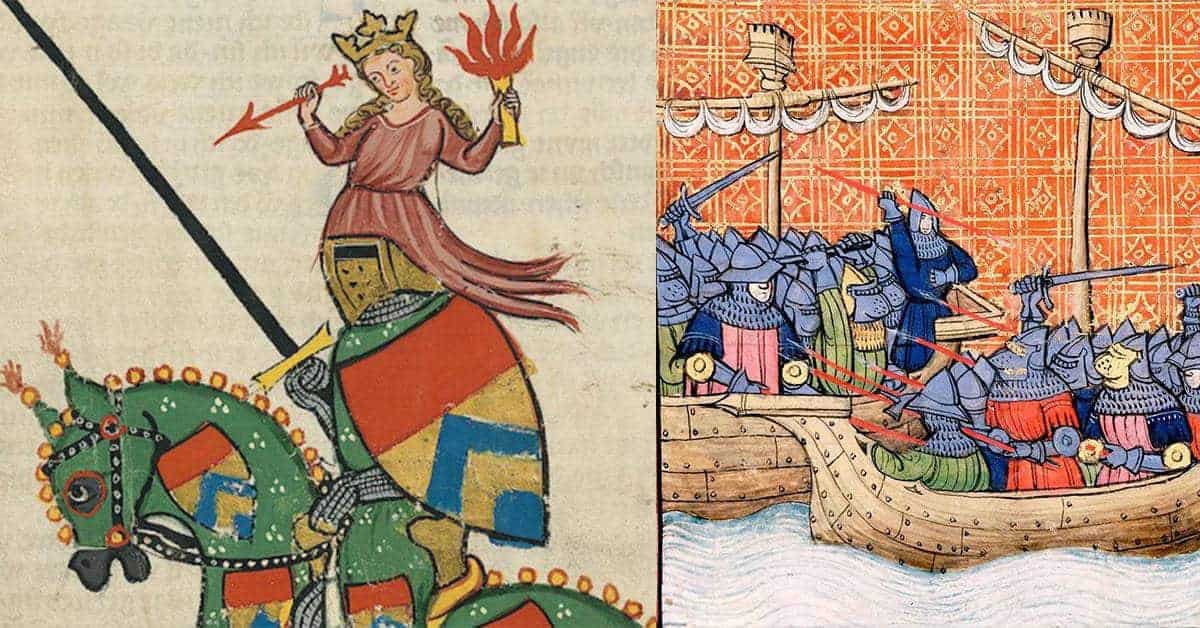The knight in shining armor and the damsel in distress are two of the Middle Age’s most enduring clichés. Through his strength, his devotion and his undying love, the knight finds a way to rescue his lady from peril, winning her heart and reinforcing his reputation as a great knight along the way. Such is the stuff of fantasy. But, since fantasy and history rarely go hand-in-hand, we should ask what historically constituted a great knight?
To be a knight, in the most basic sense, was to be a man of aristocratic standing, wealthy enough to fight as a heavy cavalryman when called upon, and initiated into a chivalric circle through having been “dubbed”. To be the perfect knight demanded more than that. Certain military attributes were required: being a brave and able fighter, willing to serve one’s liege honorably and loyally, and being a protector of the weak.
To achieve chivalric greatness, a knight also had to aspire to—and indeed realize—some more abstract ideas. Unfaltering religious piety was important. And while it was difficult when it came to Christian knights having to fight Christian knights, there were always various papal-sanctioned Crusades that provided an outlet. The best knights also participated in tournaments and jousts (and won them too, ideally) and engaged in the rituals of courtly love.
Despite the dozens of works defining what it meant to be the perfect knight, there was, in reality, no such thing; no one man could fill all these criteria. However, the Middle Ages were saturated with knights who can be considered great. Here are 9 of them.

Geoffrey de Charny (1300 – 1356)
When it comes to chivalric perfection, few ever came closer than Geoffrey de Charny. Even during his own lifetime, people were calling him “the true and perfect knight”, and his military achievements, unwavering loyalty to French crown and fighting prowess all marked him out for the title. However, there could be another reason he fits so well into the definition of the perfect knight: as the author of three works on what it meant to chivalric, it’s a definition he helped create.
Geoffrey de Charny—not to be confused with the Knight Templar of the same name who was burned at the stake in 1307—lived, and ultimately died, by the sword. After first seeing action in Gascony in 1337, he served a series of French kings fighting the English in Tornai, Brittany, and Calais. He also participated in a crusade against the Turks (though it was ultimately unsuccessful) led by Humbert II of Viennois in 1345. He suffered defeats during his career, but it was his victories he was recognized for, earning him his initiation into John the Good’s Order of the Star.
Geoffrey de Charny fought his last battle at the Battle of Poitiers between the English and the French in 1356. The battle is described in some detail by the French chronicler Froissart (who also gives us much of our information about the Black Death and the Hundred Years War in general). Charny had been entrusted as the standard-bearer of the red silken Oriflamme of St. Denis, the king’s sacred standard. Naturally, the standard was an effective rallying point; according to legend, Charlemagne had borne it to the Holy Land. It also inspired fierce fighting, as its very presence on the battlefield signaled that no quarter was to be given.
The Oriflamme was also, however, a valuable prize, and for this reason, often drew the heaviest—and bloodiest—of the fighting. So it was Poitiers, when its 55-year old bearer abandoned any hope of surrender (still an honorable option under the chivalric code) and fought to the death. Along with most of the flower French knights, Charny was ultimately cut down, completely surrounded by English soldiers, the Oriflamme still in his hand. In defining what made the perfect knight, Geoffrey de Charny had once written that “he who achieves more is more worthy.” Judging himself by his own standard, it’s hard to think of any worthier.

